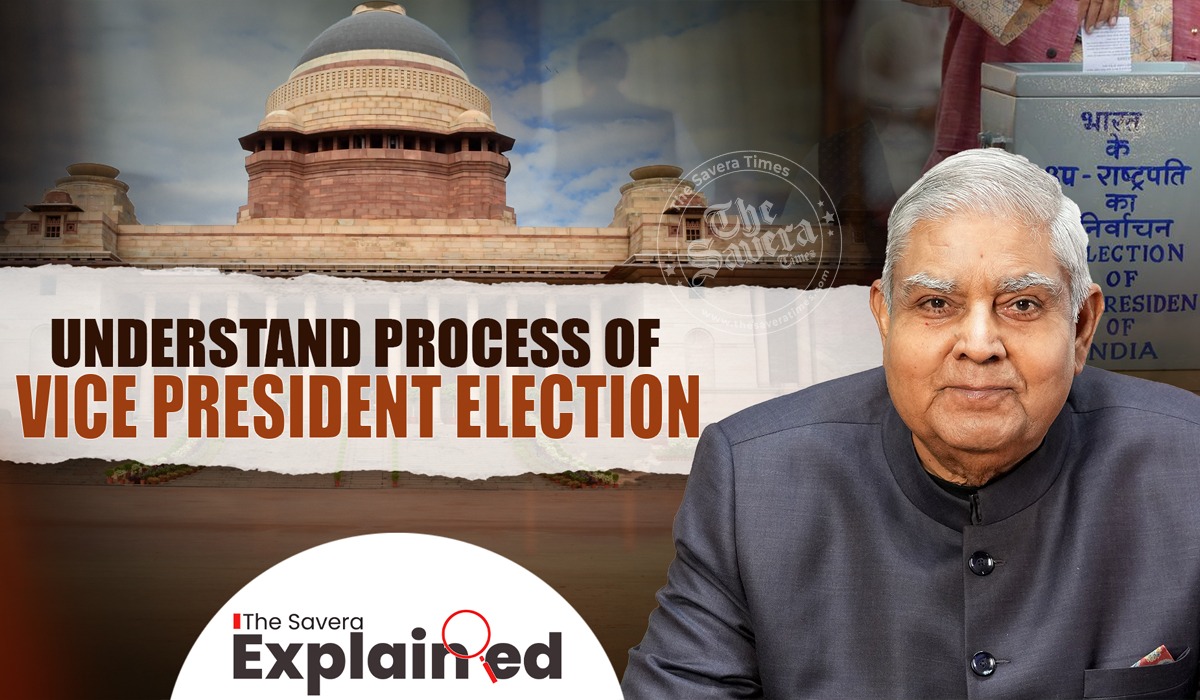
Vice President Jagdeep Dhankar tendered his resignation yesterday, 2 years before the completion of his term. The resignation of Vice President Jagdeep Dhankhar has set in motion a constitutional and political transition that will unfold over the coming weeks.
His sudden resignation from the post came on the first day of the Parliament session. In a letter written to President Murmu, Dhankar cited his health and medical conditions for stepping down from the post.
After his immediate resignation, the post of Vice President of India lies vacant. As per the constitution, the post has to be filled within the period of six months. Let us tell you how and when the new Vice President of India will be elected.
With his departure now official, the process to elect a new Vice President – India’s second-highest constitutional office – will begin under Article 66 of the Constitution.
Until that election is concluded, the Deputy Chairman of the Rajya Sabha will step in to discharge the Vice President’s parliamentary duties, including presiding over proceedings in the Upper House.
Process of Vice President’s Election
Unlike the Prime Minister, the election of President and Vice President is not done by the people of the country. Rather, the Vice President of India is elected by an electoral college consisting of members of both houses of Parliament (Lok Sabha and Rajya Sabha).
The process is ruled by the Constitution of India (Articles 63-71) and the Presidential and Vice-Presidential Elections Act, 1952.
As per the Vice President of India’s Website, the Vice-President is not a member of either House of Parliament or of a House of a Legislature of any state.
If a member of either House of Parliament or of a House of a Legislature of any state is elected as Vice-President, he is deemed to have vacated his seat in that House on the date he/she enters his office as Vice-President.
Conditions to Contest Vice President Election
An election to fill a vacancy caused by the expiry of the term of office of Vice-President is completed before the expiry of the term. In case a vacancy arises by reasons of death, resignation or removal or otherwise, the election to fill that vacancy is held as soon as possible after the occurrence.
Nomination
Candidates must be nominated by at least 20 electors (MPs) as proposers and 20 as seconders. The candidate must be an Indian citizen, at least 35 years old, and eligible for election to the Rajya Sabha.
Election Method
The election uses a secret ballot and the single transferable vote system (proportional representation). Electors vote by marking preferences for candidates. Each elector’s vote has a value (typically 1), and a quota is calculated based on the total valid votes divided by two, plus one. A candidate securing this quota is elected.
In case if no candidate meets the quota initially, the candidate with the fewest votes is eliminated, and their votes are redistributed based on second preferences. This continues until a candidate achieves the quota or only one remains.
